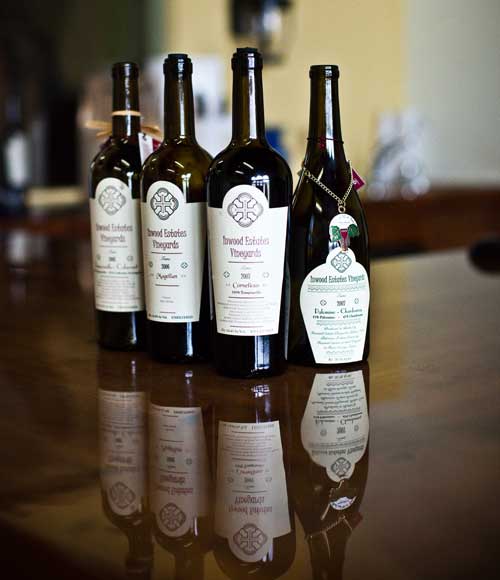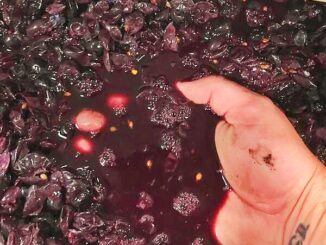And You Thought That Texas Wines Were Only for the Moment!
Earlier this week I perused an online article on the Dallas Morning New website titled, “The best Texas wines — all made from Texas grapes” penned by Tina Danze. Tina brought together a panel of good Dallas tasters including: Blythe Beck, chef; Hunter Hammett, certified sommelier, Pyramid Restaurant at the Fairmont Hotel Dallas; James Tidwell, certified wine educator; master sommelier, Cafe on the Green, Four Seasons Resort and Club in Las Colinas; Jennifer Uygur, co-owner and wine director, Lucia restaurant; Cathy Barber, Taste editor). They gave their take on what they felt were the best Texas wines…actually made from Texas grapes.
Click here for Danze and company’s top ten Texas wine list….But, note that the lead wine in their photo array is Inwood Estates Vineyards 2009 Cornelious Tempranillo.
Also, continue down into the reader comments. There is good banter on what “local” means. I added my comments mid-week, but unfortunately, can’t seem to find them now (moderated out perhaps???). I tried to clear the air about differences between what local means to “foodies” and “winos” – foodies typically view local around there feet (maybe 30 miles around or so), but local wine people generally call wine made from their states grapes local, but then I opened the question to how many Texas grapes are required in a bottle for the wine to be called a Texas wine. Then, I got into my often said manifesto on labeling – i.e. what does “Texas appellation” mean, what does “For Sale in Texas Only” mean, etc. But, alas it seems to be gone.
As I went down the page to the recent comments, I found one tagged to the Facebook account Spencer Gatlin, son of Inwood Estates owner and winemaker, Dan Galtin. The comment starts:
“It is impossible and premature to evaluate 2009 Cornelious, or any 3-year-old Inwood wine, in a panel tasting this soon. These are premium wines with 30+ months in French Oak. That means this wine was still in barrels this Spring and only bottled at the beginning of the Summer. All Inwood Reds are hand-crafted to reach peak drinkability in 7-15 years. You would have to go back several years to properly assess the value of an Inwood wine. And, to be accurate, of Inwood’s 10 vintages, only the 2004 has entered it’s window of peak drinkability. Even the 2003 still needs about 3 more years at this time.”
And the comment goes on to say:
“It is unfortunate that the wine professionals did not understand this, but I see it everyday so I understand why.”
I suggest reading both the article and digging down into the comments below the article. All I say is that the comments cited show a man with vision, a vision that sees Texas wines that age and are not to be enjoyed just for the moment. However, I might advise from the latter comment that Galtin should not be so hard on the people saluting his father’s wines or the people that are trying to sell them. It doesn’t pay for winemakers and winery owners to look down their noses at anybody.
Bordeaux is full of people that argue over the current vintage, wine in barrel and wine in the marketplace and its age-worthiness, lack of aging potential and what the price should be today and could be in 10, 20 or more years. They are talking about investor quality wines. Maybe this is the start of a new trend in Texas wines: buy them now, lots of them and cellar them away for 10 or 20 years. I have and do cellar Texas wines, albeit only a precious few for the long term. These wines (usually Cabernet, Tempranillo and red blends with the except of a couple Viognier and Roussanne) have generally done very well to 5 years and a very precious few have made it to 10 years in style. All I have to say is… “Is Texas ready for a futures market for its wine?”
Cheers.





Russ, you have to be logged into Facebook to see your comment on that website. I wondered the same thing when my comment was gone. I logged in and then it re-appeared.